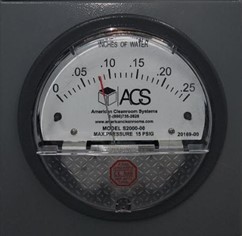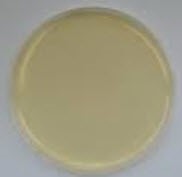Cleanroom certification is when users have their cleanroom periodically tested by 3rd party to ensure they meet ISO cleanroom classification. For medical device and pharmaceutical companies this may be to stay compliant with their CGMP or FDA validation. For semiconductor, aerospace and other industries, the cleanroom is essential to manufacturing yield and product quality.
Cleanroom classification standards include particle counts and air changes per hour. Other parameters that are often tested as part of cleanroom certification include: room pressure, temperature, humidity, viable particles, light and sound.
Particle tests can be non-viable or viable (living). For cleanroom classification the tests are for non-viable particles. For ISO 14644-1 each cleanroom classification has a maximum number of particles of a certain size per cubic meter. These measurements are taken using a laser particle counter (Figure 1).
| Class | Maximum Particles/m³ | FED STD 209E equivalent | |||||
| >0.1 um | >0.2 um | >0.3 um | >0.5 um | >1 um | >5 um | ||
| ISO 1 | 10 | 2 | |||||
| ISO 2 | 100 | 24 | 10 | 4 | |||
| ISO 3 | 1,000 | 237 | 102 | 35 | 8 | Class 1 | |
| ISO 4 | 10,000 | 2,370 | 1,020 | 352 | 83 | Class 10 | |
| ISO 5 | 100,000 | 23,700 | 10,200 | 3,520 | 832 | 29 | Class 100 |
| ISO 6 | 1,000,000 | 237,000 | 102,000 | 35,200 | 8,320 | 293 | Class 1,000 |
| ISO 7 | 352,000 | 83,200 | 2,930 | Class 10,000 | |||
| ISO 8 | 3,520,000 | 832,000 | 29,300 | Class 100,000 | |||
| ISO 9 | 35,200,000 | 8,320,000 | 293,000 | Room Air | |||
Figure 2. ISO-14644-1 cleanroom classes
There is also the US FED STD 209E cleanroom classes which measures particle per cubic foot but is very similar to the ISO-14644-1 classes.
| Class | Maximum Particles/ft³ | ISO equivalent | ||||
| >0.1 um | >0.2 um | >0.3 um | >0.5 um | >5 um | ||
| 1 | 35 | 7 | 3 | 1 | ISO3 | |
| 10 | 350 | 75 | 30 | 10 | ISO4 | |
| 100 | 100 | ISO5 | ||||
| 1000 | 1000 | 7 | ISO6 | |||
| 10,000 | 10,000 | 70 | ISO7 | |||
| 100,000 | 100,000 | 700 | ISO8 | |||
Figure 3. FED STD 209E cleanroom classification
Room air pressure testing is typically done with portable manometers. Most cleanrooms have permanent magnehelic gauges that display cleanroom pressure in inches of water or pascals.

Air flow testing: Another requirement for both ISO and FED STD cleanroom classification is HEPA filtered air changes per hour.
| Criteria | Class 10 ISO4 | Class 100 ISO5 | Class 1000 ISO6 | Class 10,000 ISO7 | Class 100,000 ISO8 |
| Air changes per HR/Min | 500-600 / 8 to 10 | 300 to 480 / 5 to 8 | 180 / 3 | 60 /1 | 20 /0.33 |
| Filter coverage % | 90 – 100 | 60 – 70 | 20 – 30 | 7 – 15 | 4 – 5 |
| CFM per square foot | 85 – 90 | 36 – 65 | 18 – 32 | 9 – 16 | 4 – 8 |
| Filter Efficiency | 99.9997% ULPAs | 99.997% HEPAs | 99.997% HEPAs | 99.997% HEPAs | 99.97% HEPAs |
The individual air flow rate from each HEPA fan filter unit can be measured with air flow capture hood or Velgrid system.
Viable testing is for live organisms. Typically, samples are collected using settling plates with some type of media. The plates are placed in the cleanroom at specific locations for 4 hours and then are then sent off to analytical labs for incubation and measurement.

Temperature testing is done with a NIST traceable digital thermometer. Humidity testing is done with NIST traceable humidity sensor.
Light testing is typically done with a light meter in grid pattern. The cleanroom test is lumens per square meter (LUX).
Sound testing is done with sound level meter in grid pattern. The cleanroom test is in decibels.

Frequency of cleanroom testing
Most companies do 3rd party cleanroom testing annually and do internal testing quarterly or monthly. How often depends on company manufacturing procedures, ISO-9001 procedures, customer requirements, or CGMP/FDA validation document.
Cleanroom certification is when a cleanroom is tested by 3rd party to ensure they meet cleanroom classification standards including particle counts and air changes per hour. Other parameters that are often tested include room pressure, temperature, humidity, viable particles, light and sound. The tests are required to meet FDA validation/CGMP requirements, ISO procedures or ensure manufacturing yield and product quality.






